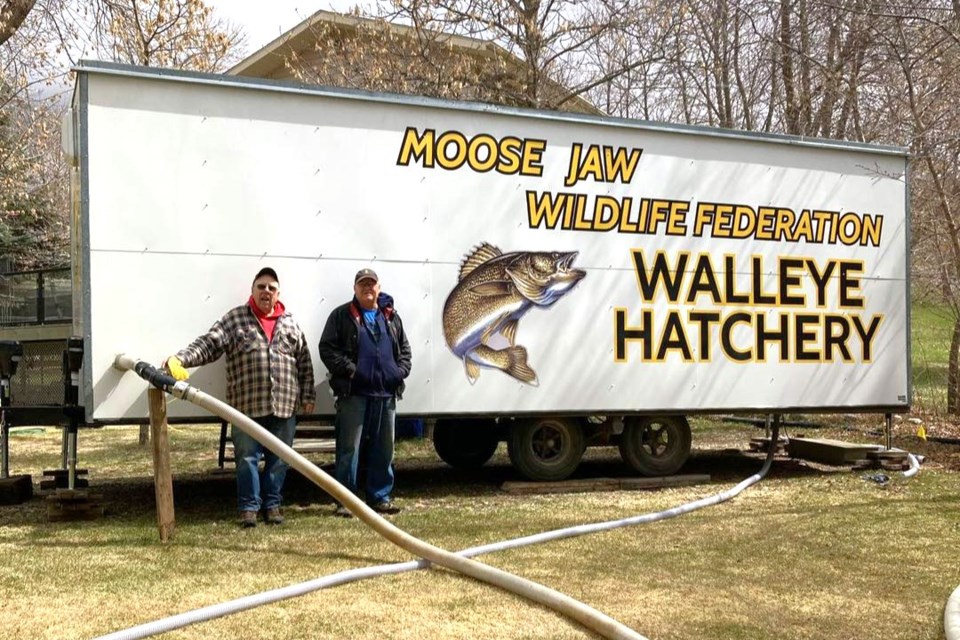MOOSE JAW — A new generation of walleye is on its way to southern Saskatchewan waters, thanks to the Moose Jaw Wildlife Federation’s (MJWF) mobile hatchery, which has just received its first batch of fish eggs for the season.
The eggs, harvested from Buffalo Pound Lake by Saskatchewan’s Ministry of Environment during its annual spawn camp, are now incubating at the provincial hatchery in Echo Lake and in the MJWF’s mobile hatchery positioned at the north shore of Buffalo Pound Lake.
“We are in the process of incubating… millions of eggs,” said Todd Smith, president of the MJWF. “Once the fry hatch, they (will be released to restock) all the reservoirs in the southern part of the province.”
The mobile hatchery has been in operation for over two decades and plays a critical role in restocking Saskatchewan’s lakes and reservoirs. Although walleye populations are not facing endangered species status, this year's young walleye fish, known as “fry,” are expected to help maintain sport fishing populations in Thompson Lake and other reservoirs around Gravelbourg and beyond.
Thompson Lake, for example, supports a healthy and actively managed walleye population that was bolstered by stocking 500,000 walleye fry in 2022. The lake is a popular angling destination and its diverse aquatic habitat makes it suitable for the species.
The number of eggs the Ministry of the Environment collects each year depends on the province’s stocking needs and the success of each harvest.
“It varies year over year, depending on what the ministry needs for stocking purposes, as well as how many eggs they harvest out of Buffalo Pound,” Smith explained. “From there, they hope to produce sufficient fry to be able to stock the lakes both in the northern (and)… central part (of the province), (including) all the reservoirs in the southern area.”
Walleye are a popular sport and table fish in Saskatchewan, but not all lakes can support sustainable natural reproduction. In particular, reservoirs in the south often face environmental challenges.
“Some (southern reservoirs) will winter kill (fish populations if) they don't get enough oxygen. You may end up with a lack of oxygen and starvation, (leading to) a significant die-off,” Smith said. “These (conservation efforts) are ways that you can restock the lake and still provide a sport fishery.”
The incubation process typically takes around three weeks — though it can vary with water temperature. Warmer water accelerates development, meaning fry could be ready for release earlier.
Adding to the excitement is a visual upgrade to the mobile hatchery itself, including new signage and a polished look.
“We’ve prettied up our walleye hatchery,” Smith said. “We were able to get all our new signage up thanks to ; the crew over there made us all the decals for the trailer.”
, where it auctioned off 10 beakers used in the hatchery process among other highlights. Proceeds from the largest annual fundraising event will help sustain the hatchery and its operations.
“All the money we raised from that goes directly into the walleye hatchery,” Smith confirmed.
As the fry grow and begin a new life in Saskatchewan’s waters, the Moose Jaw Wildlife Federation is reaffirming its place at the heart of grassroots conservation — ensuring that anglers and future generations can continue to enjoy a vibrant, healthy fishery.
For more information about the Moose Jaw Wildlife Federation and its conservation efforts, visit “” on Facebook or its website at .




